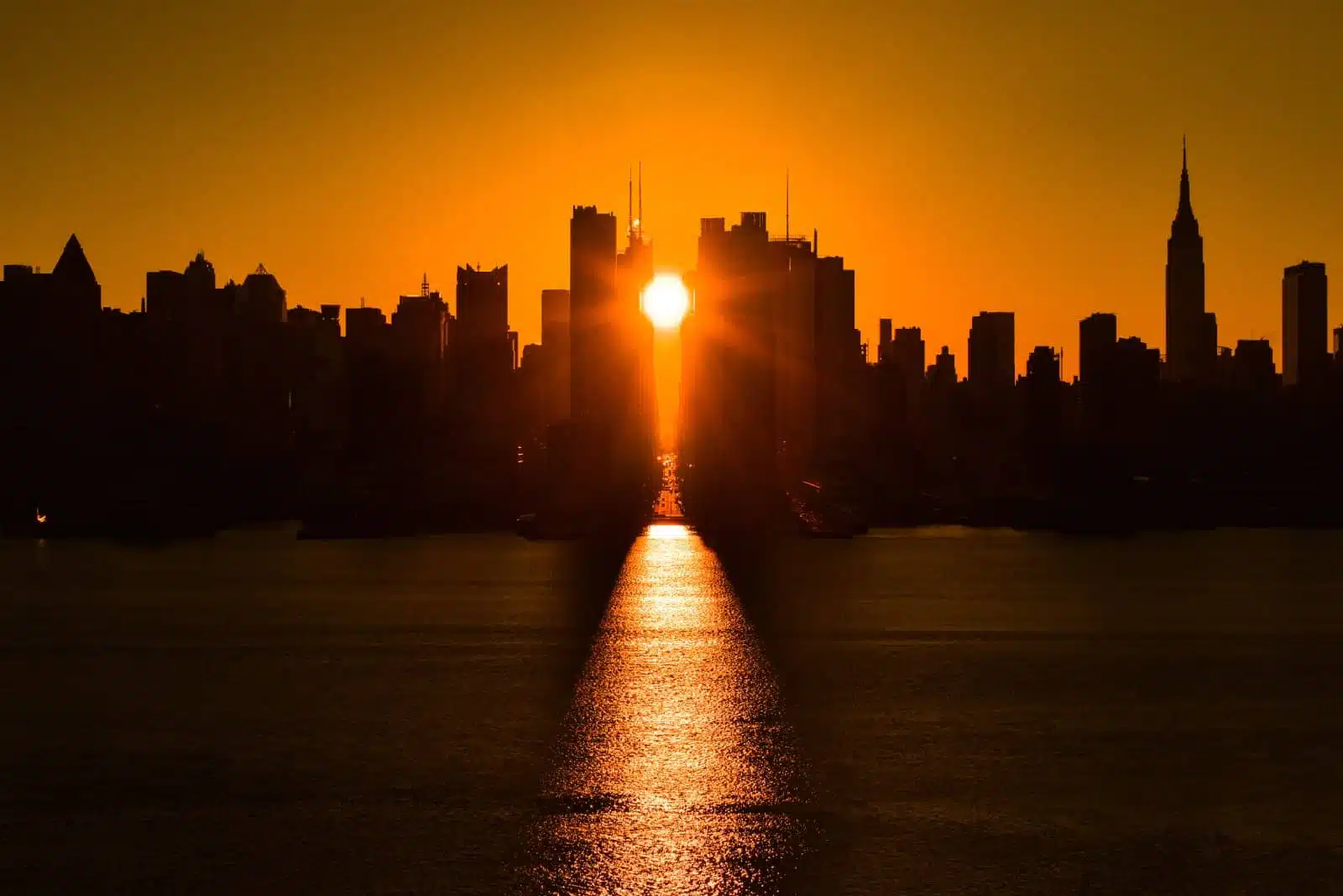Manhattanhenge is a celebration that transforms the urban landscape of New York City into a stunning astronomical observatory. This guide aims to provide a comprehensive overview of Manhattanhenge, detailing when and where to witness this phenomenon, exploring its significance, and offering practical advice for those planning to experience it.
Manhattanhenge

Image Credit: Shutterstock / IM_photo
Manhattanhenge captures the imagination of New Yorkers and visitors alike, offering a moment when the city’s grid aligns perfectly with the setting sun, creating breathtaking views along the east-west streets. This phenomenon occurs twice a year around the summer solstice, turning the usual hustle and bustle of Manhattan’s streets into gatherings of awe-struck spectators. Beyond its visual magic, Manhattanhenge connects us to the celestial movements that govern our planet, reminding us of the precision and beauty of the universe. This guide explores the best ways to experience Manhattanhenge, from optimal viewing spots to understanding its astronomical and cultural significance.
A Natural Phenomenon
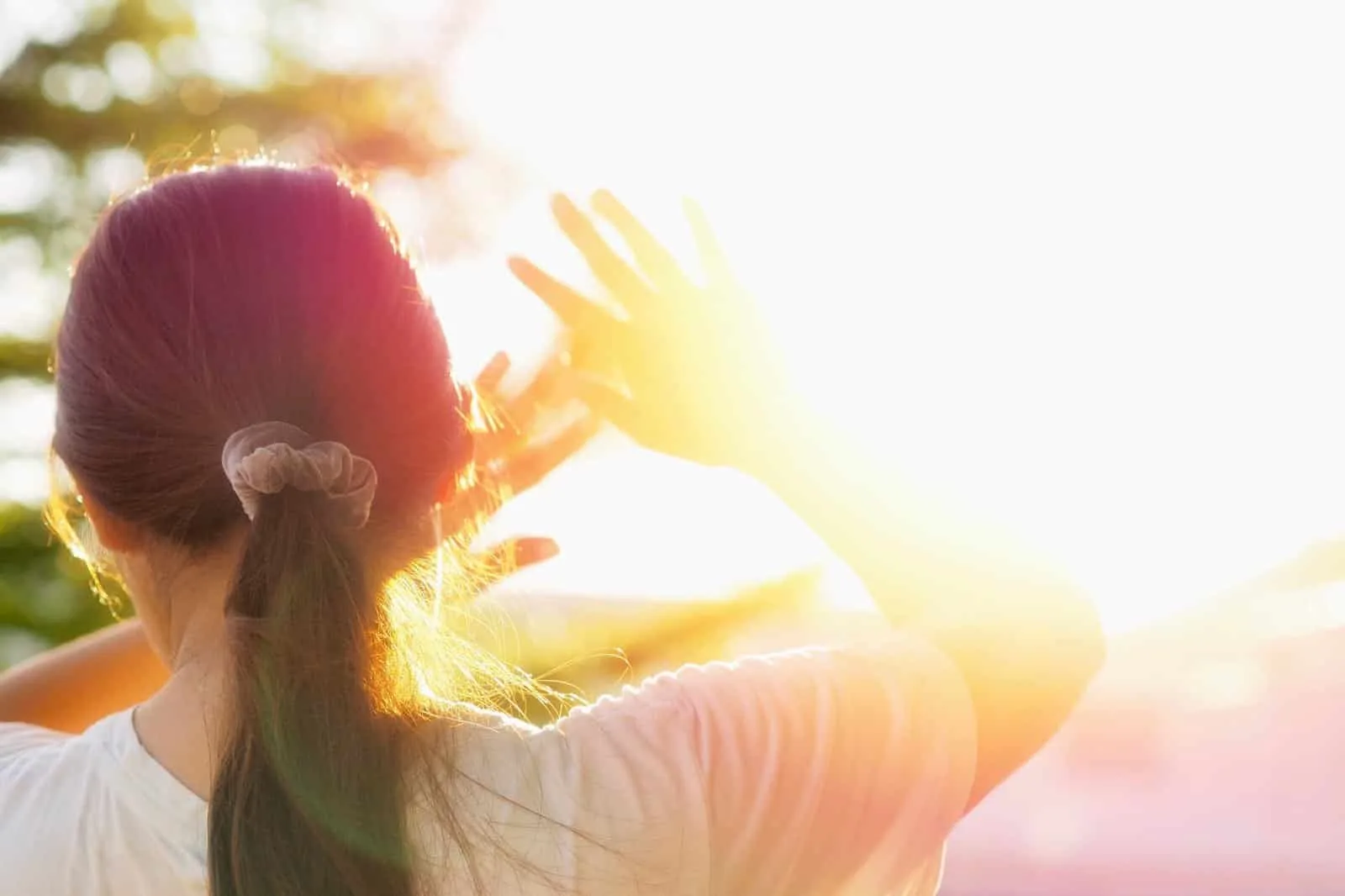
Image Credit: Shutterstock / 1386270050
Manhattanhenge is an awe-inspiring natural phenomenon that occurs when the setting sun aligns perfectly with the east-west streets of Manhattan’s grid. This alignment illuminates the city’s canyons of skyscrapers with a radiant glow, creating a magical moment that draws crowds of spectators and photographers. The event happens twice a year, around May and July, offering both “half sun” and “full sun” experiences. The “half sun” sees the sun’s disk partially obscured by the cityscape, while the “full sun” presents the entire solar disk sitting just above the horizon, framed by Manhattan’s towering buildings. The phenomenon showcases the city’s unique grid layout, designed in 1811, which inadvertently created this modern solstice event. Observing Manhattanhenge offers a chance to witness a stunning sunset and provides a moment of connection with the cosmos, highlighting the intricate dance between the Earth and the sun.
Insider’s Tip: For the best viewing experience, position yourself as far east in Manhattan as possible, ensuring a clear view along one of the major cross streets like 14th, 23rd, 34th, 42nd, or 57th Streets. Arriving early is crucial as popular spots can get crowded. Bringing a camera with a zoom lens can help capture the stunning detail of the sun’s descent.
The Manhattanhenge Effect

Image Credit: Shutterstock / KieferPix
The Manhattanhenge effect extends beyond the specific dates of complete alignment. In the days leading up to and following the official Manhattanhenge, the sunsets still offer a beautiful play of light and shadow among the city’s skyscrapers. This period allows for more opportunities to observe how the setting sun interacts with the urban environment, casting long shadows and bathing the streets in a warm, golden light. It’s a reminder of the ever-changing relationship between our planet and the sun, governed by the celestial mechanics that dictate the rhythm of our days and seasons.
Insider’s Tip: Explore different streets on the days surrounding the official Manhattanhenge dates. You might find unique perspectives and photo opportunities away from the crowds, capturing the gradual change in the sun’s position.
Cultural Significance and Community
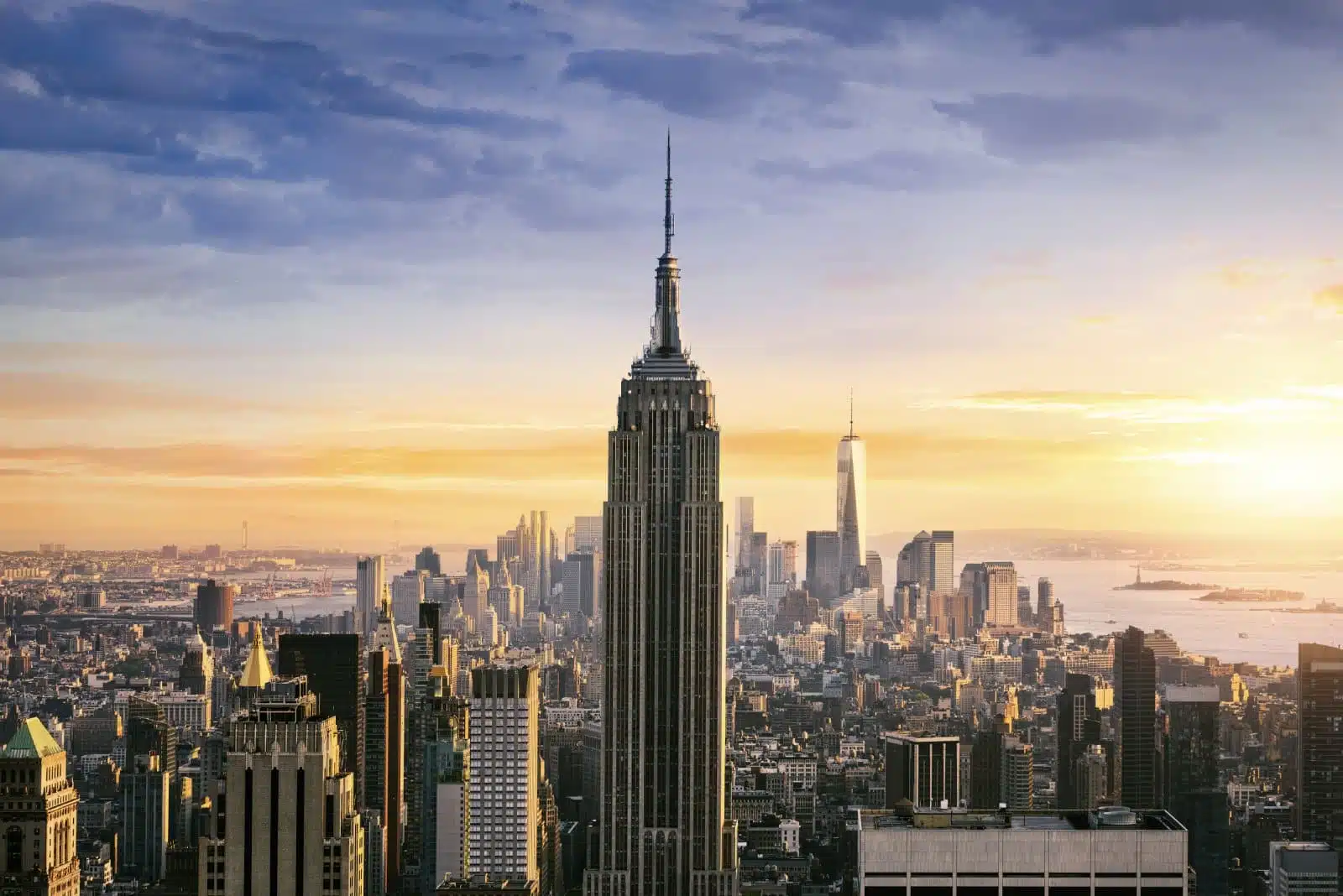
Image Credit: Shutterstock / ventdusud
Beyond its astronomical allure, Manhattanhenge holds a profound cultural significance, embodying the spirit of New York City itself. Much like the city, this event is a blend of the natural and the man-made, a symbol of how, even in the most urban environments, we can find natural beauty moments connecting us to the wider universe. It highlights New York’s enduring appeal, drawing locals from their apartments and visitors from around the globe. The communal aspect of Manhattanhenge, with crowds gathering on the streets in anticipation, reflects the city’s social fabric — diverse, vibrant, and ever-engaged with the world around it. This phenomenon has become an urban ritual, a shared experience that transcends the mere act of watching a sunset to become a celebration of place, time, and community.
Insider’s Tip: Engage with the Manhattanhenge community by participating in one of the many events or gatherings organized around the phenomenon. Museums, cultural institutions, and local astronomy groups often host talks, photography contests, and viewing parties, offering a richer understanding of the event and the opportunity to meet fellow enthusiasts.
Health and Well-being Benefits

Image Credit: Shutterstock / Shine Nucha
Witnessing Manhattanhenge can have surprising benefits for one’s mental and physical well-being. Manhattanhenge offers a moment of collective pause and reflection in a city that epitomizes the fast-paced, high-stress lifestyle. The beauty of the natural world, breaking through the concrete jungle, serves as a reminder of the world beyond our immediate concerns and stresses. This communal experience of awe can contribute to a sense of belonging and happiness, reducing feelings of isolation. Furthermore, spending time outdoors for the event encourages physical activity and exposes individuals to natural light, improving mood and vitality.
Insider’s Tip: Make the most of the Manhattanhenge days by planning outdoor activities before the sunset, such as walking tours of Manhattan’s architectural landmarks or picnics in one of the city’s iconic parks. This approach maximizes the health benefits of being outdoors and makes the day a holistic experience of urban exploration and celestial appreciation.
Educational Opportunities
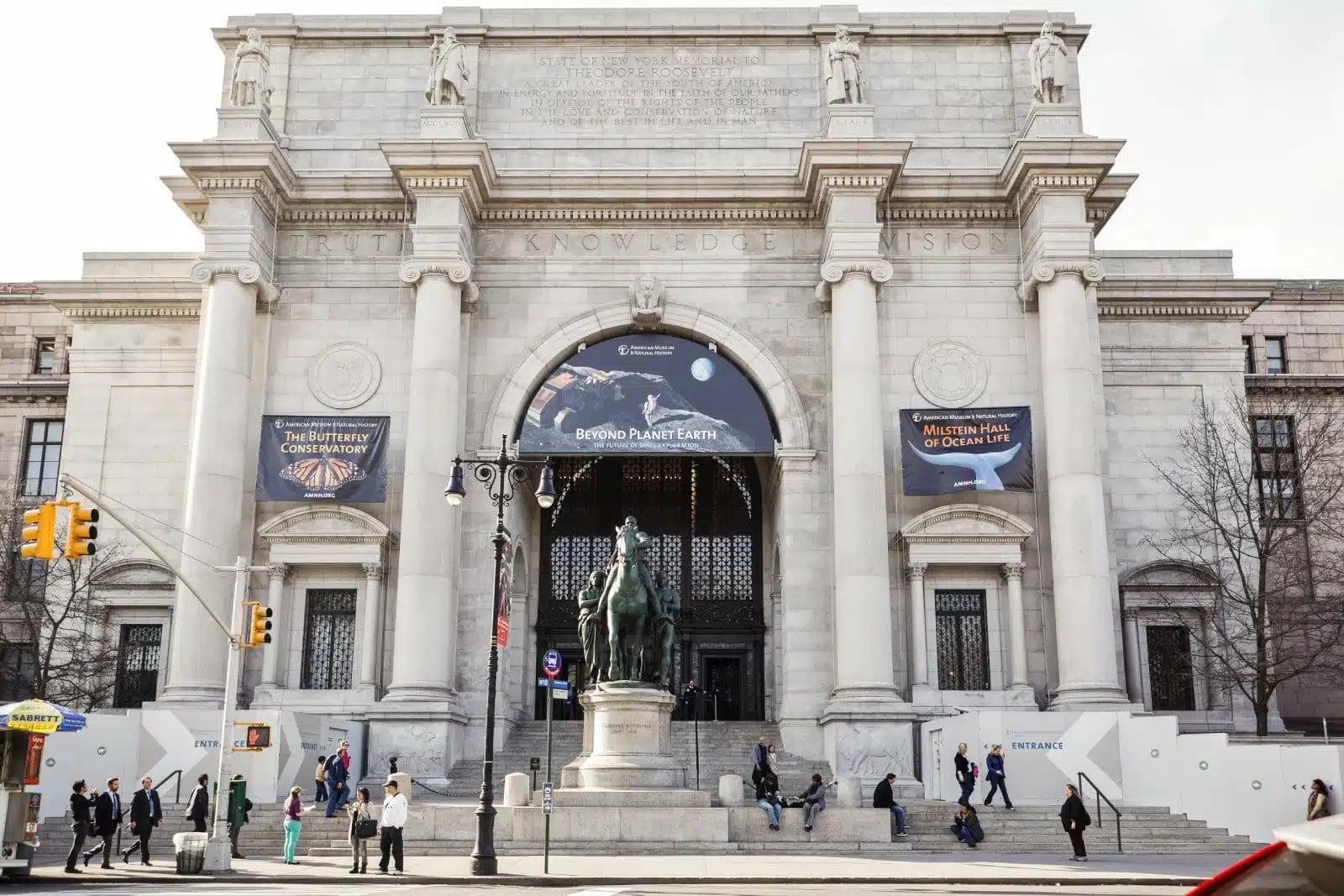
Image Credit: Shutterstock / DW labs Incorporated
Manhattanhenge is a spectacle and an educational opportunity, offering insights into astronomy, urban planning, and the science of light. For families and educators, it provides a real-world context to discuss the movements of the Earth and the sun, the history of New York City’s development, and the physics of light and shadow. The event can spark curiosity and learning in individuals of all ages, encouraging further exploration of science and the natural world.
Insider’s Tip: Take advantage of the resources offered by local institutions like the American Museum of Natural History, which often hosts lectures and educational programs tied to Manhattanhenge. These programs can provide a deeper understanding of the event and its scientific background, enriching the experience.
When to Travel

Image Credit: Shutterstock / NicoElNino
The optimal dates to experience Manhattanhenge are around May 29-30 and July 12-13. Planning your visit to New York City during these times ensures you won’t miss this spectacular event.
How to Get There

Image Credit: Shutterstock / littlenySTOCK
Manhattan is well-served by public transportation. To reach the prime viewing spots for Manhattanhenge, use the subway to get to an east-west cross street with a clear view westward. The MTA’s website provides detailed maps and service times to help plan your journey.
The Bottom Line
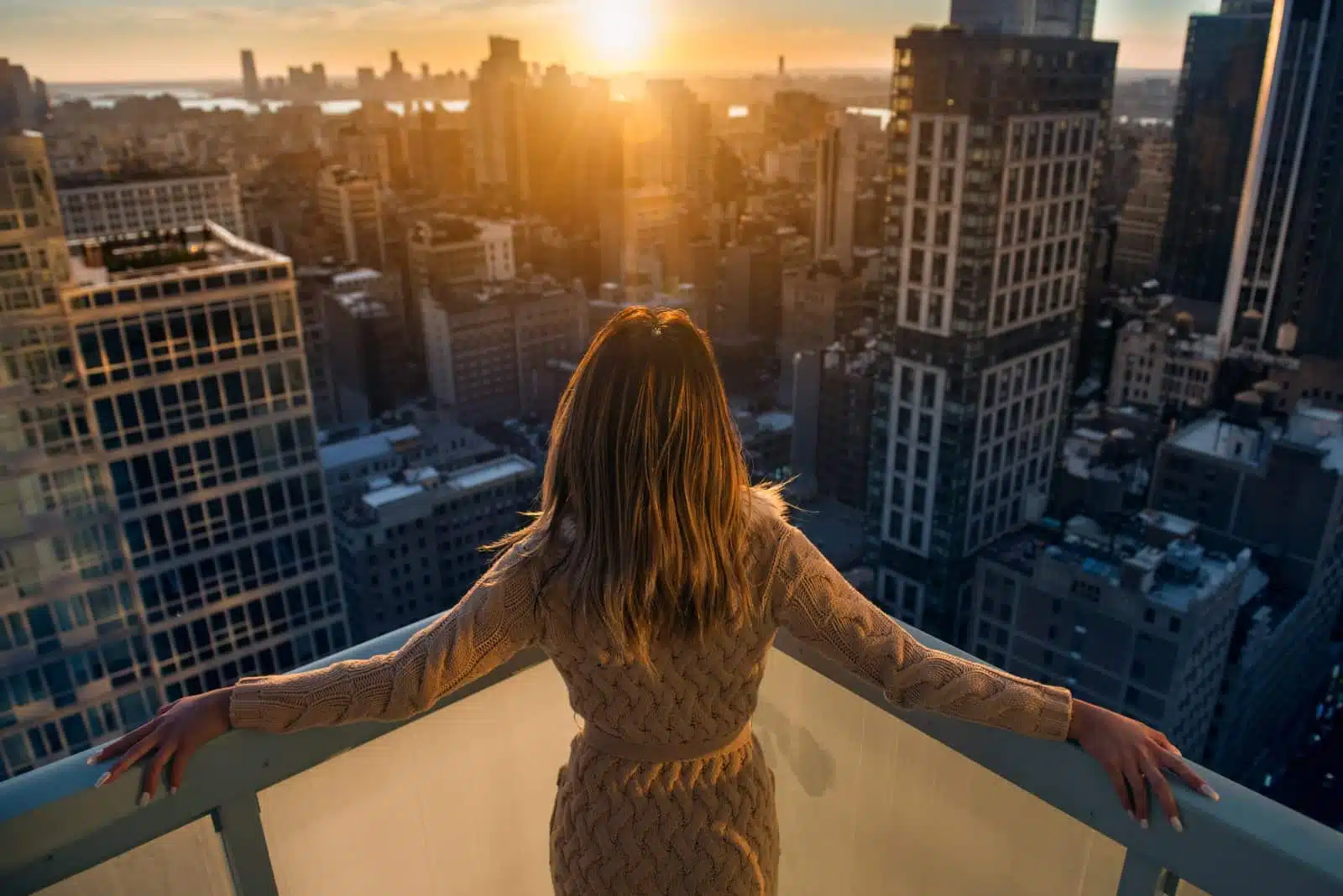
Image Credit: Shutterstock / Nick Starichenko
Manhattanhenge is more than a stunning visual phenomenon; it’s a multifaceted experience that offers cultural, health, and educational benefits. It embodies the unique character of New York City — its ability to surprise, unite, and inspire. As you plan your experience of Manhattanhenge, remember to embrace the broader opportunities it presents: to connect with others, learn, and find moments of beauty and wonder in the everyday. Whether capturing the perfect photo, sharing the experience with loved ones, or simply taking in the view, Manhattanhenge reminds you of the magic that can occur when the celestial and the urban intersect.
More From The Green Voyage
12 Best Practices for Sustainable Travel in 2024 – How to Travel With Minimal Environmental Impact
Unlocking Hotel Perks – A Traveler’s Guide to Maximizing Hotel Reward Programs for Optimal Benefits
Travel Hacks for Frequent Flyers – 6 Tips and Tricks to Make the Best of Air Travel
The post Manhattanhenge in NYC first appeared on The Green Voyage.
Featured Image Credit: Shutterstock / Hit1912.
For transparency, this content was partly developed with AI assistance and carefully curated by an experienced editor to be informative and ensure accuracy.
Tips for Trip Success
Book Your Flight
Find an inexpensive flight by using Kayak, a favorite of ours because it regularly returns less expensive flight options from a variety of airlines.
Book Your Hotel or Special Accommodation
We are big fans of Booking.com. We like their review system and photos. If we want to see more reviews and additional booking options, we go to Expedia.
You Need Travel Insurance!
Good travel insurance means having total peace of mind. Travel insurance protects you when your medical insurance often will not and better than what you get from your credit card. It will provide comprehensive coverage should you need medical treatment or return to the United States, compensation for trip interruption, baggage loss, and other situations.Find the Perfect Insurance Plan for Your Trip
